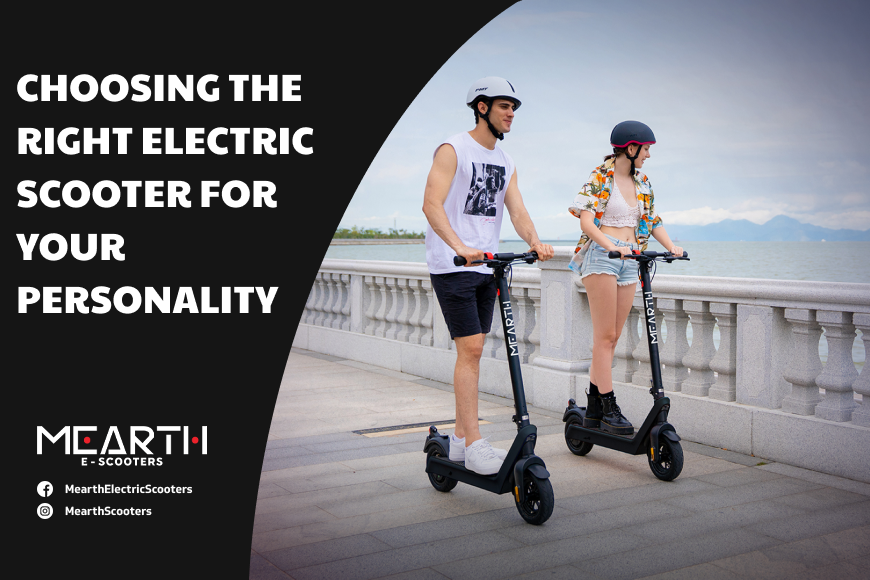
Admit it, there’s stress everywhere you go.
This so-called urban life can be stressful, especially when it comes to transportation. Traffic congestion, air pollution, noise, and crowded parking are some of the common problems that city dwellers have to face day in, day out.
Such problems have lingering negative impact on the environment, health, and the well-being of people in their communities.
But there is what they call a new trend that promises to change the way people move around and about the city. They’re called electric scooters.
Did you know, or do not know yet – that the e-scooters are electric-powered vehicles that can either be: rented or owned by individuals, or shared by multiple users through app-based platforms.
Oh yes! E-scooters are small, lightweight, convenient and easy to use, making them ideal for short-distance trips in urban areas. Oh, you know that already? Okay, but do you know how e-scooters sold in Australia are transforming urban life?
Have you given a thought about the benefits, as well as the challenges of using e-scooters in Australia’s major cities?
There are implications for urban sustainability and livability, but e-scooters can be a positive force for urban transformation if they are integrated into a holistic and inclusive mobility system.
Let’s talk about the benefits of E-Scooters:
Regarding urban life, both for individuals and society, what good can they do?
• Convenient and accessible. E-scooters offer a convenient and accessible way of traveling within cities, especially for short-distance trips that are too long to walk but too short to drive or take public transport. E-scooters can be easily found, unlocked, and paid for using smartphone apps, and can be parked almost anywhere. E-scooters can also improve access to public transport by providing a first- or last-mile solution for commuters.
• Cost-effective. E-scooters are cheaper than other modes of transport, such as cars, taxis, or ride-hailing services. The average cost of renting an e-scooter is around $1 to $2 per ride, depending on the distance and duration. E-scooters can also save money on fuel, maintenance, insurance, and parking fees for car owners.
• Fun and enjoyable. E-scooters can provide a cool, fun and wholesome way of experiencing the city, as they allow riders to explore new places, enjoy the scenery, and feel the breeze. E-scooters can also enhance social interaction and community cohesion, as they encourage people to share rides, exchange greetings, and join events or groups related to e-scooter culture.
• Sustainable. E-scooters can contribute to urban sustainability by reducing greenhouse gas emissions, air pollution, noise pollution, and congestion levels. E-scooters use electric motors that are more efficient than combustion engines and require less energy to move a person than a car or SUV. E-scooters can also replace car trips or complement public transport trips, thus reducing the demand for road space and parking space.
Being realistic, let’s weigh in the challenges concerning E-Scooters:
Opposers pose certain challenges for those in urban setting, both for individuals and the community as well. The challenges referred to are:
• Safety. E-scooters can pose safety risks for riders and other road users, such as pedestrians, cyclists, or drivers. E-scooter accidents can be caused by factors such as speeding, reckless riding, drink riding, poor road conditions, not using helmet while riding, or collisions with other vehicles or objects. The fear of getting injured while riding an e-scooter can range from minor cuts and bruises to fractures, concussions, or even fatalities.
• Regulation. E-scooters face regulatory uncertainty and inconsistency in many cities, as they are often not covered by existing laws or policies regarding transport modes, road use, or parking. The rules can be confusing, contradictory, or poorly enforced, leading to conflicts, tensions, or violations among e-scooter users and other stakeholders.
Different cities have different rules regarding where e-scooters can be ridden (sidewalks, roads, or bike lanes), how fast they can go, who can use them (age, license, or insurance requirements), or how they should be parked. E-scooters can also be misused by riders who do not follow the rules or etiquette of e-scooter sharing or abandoning them in inappropriate places, thereby contributing to physical clutter and environmental pollution.
• Vandalism. E-scooters can be subject to vandalism, theft, or misuse by some people who do not respect or value them. E-scooters can be damaged, destroyed, stolen, or thrown into rivers or lakes by vandals who act out of anger, boredom, or resentment.
Now let’s check the potentials of electric scooters for urban transformation:
For electric scooters to overcome challenges and truly achieve urban transformation, they need to be integrated, constantly innovated, and educate the users – of their benefits, and potential.
1. Integration. E-scooters should be integrated into a holistic and inclusive mobility system that supports and complements other modes of transport, especially public transport and other activities, like walking and cycling. E-scooters should be connected to public transport hubs and bike lanes, and offer incentives for multimodal trips.
E-scooters should also be accessible and affordable for all segments of society, including the low-income, the elderly, and the disabled people.
2. Innovation. E-scooters should continuously innovate and improve so as to enhance the riders’ safety, including efficiency, durability, and sustainability. New technologies, designs and features must be applied to help prevent or reduce further accidents, such as sensors, bright lights, brakes, helmets. Operations and maintenance of swappable batteries, for charging and retail distribution must be optimized. New materials must be sourced to further extend the e-scooter’s lifespan. Lastly, the present structure (of electric scooters) must be improved to greatly reduce their environmental impact.
3. Education. There should be a syndicated effort to enforce the education and training of riders, owners, and e-scooter users. They should be taught how to ride safely and responsibly, how to follow the traffic rules and etiquette of e-scooter sharing, the necessity of respecting other e-scooter riders and road users, and why it is important to avoid conflicts and accidents on the road. By having a clear understanding of such issues, users can fully appreciate the benefits of riding an electric scooter.
Innumerable times it has been pointed out that electric scooters can and will be a positive force for urban transformation. What is imperative is their integration into the diverse yet inclusive mobility system -- not later, but now.




Leave a comment
This site is protected by hCaptcha and the hCaptcha Privacy Policy and Terms of Service apply.